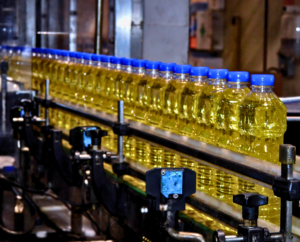Author
Leah Gibson
 As consumers continue to feel squeezed at grocery checkouts across the country, one common annoyance is driving them away from national brands: shrinkflation. We’ve all seen it. Production costs go up, and in response brands make reductions to package size while keeping prices the same. It’s operating on an old assumption that as long as sticker prices stay steady, customers won’t notice a small reduction in net volume. But that assumption is false – consumers do notice, and they are not fans. So, the question is: how does a private label manage rising production costs without increasing customer costs or shrinking package volume? The answer lies in packaging optimization.
As consumers continue to feel squeezed at grocery checkouts across the country, one common annoyance is driving them away from national brands: shrinkflation. We’ve all seen it. Production costs go up, and in response brands make reductions to package size while keeping prices the same. It’s operating on an old assumption that as long as sticker prices stay steady, customers won’t notice a small reduction in net volume. But that assumption is false – consumers do notice, and they are not fans. So, the question is: how does a private label manage rising production costs without increasing customer costs or shrinking package volume? The answer lies in packaging optimization.
Packaging optimization looks to the material costs of the packaging rather than the product to manage margins. Consumers are more forgiving towards changes to the look and feel of packaging as long as the amount and quality of the product contained within remains the same. Let’s look at an example: large-format vegetable oil bottles.
The bottles in question are 96-oz and 1-gallon and are popular with price-conscious consumers who know that they save with higher volume items. In the past, these sizes were made with high-density polyethylene (HDPE) plastic. HDPE plastic is opaque or translucent and has a rigid linear molecular structure, making it durable in ordinary use. But the downside of HDPE plastic is that it’s prone to cracking when dropped, meaning that there’s a high risk of product loss due to regular human error.
So what happens when these large-format bottles are made of a different type of plastic? Catania Oils recently introduced 96-oz and 1-gallon bottles made of polyethylene terephthalate (PET) plastic. PET plastic is less rigid than HDPE plastic, so it resists cracking when dropped. Because of PET plastic’s different qualities, the same bottle can be made using 44% less plastic compared to the HDPE version. These new bottles are also made up of 30% post-consumer recycled materials rather than virgin plastic.
The difference is noticeable to the consumer, but not negative. The new containers are transparent where the old containers were fully or partially opaque, which suits consumers who want to see the color of the oil before purchasing. Where the old containers had a built-in handle, the new ones have the advantage of a built-in grip on the bottle and a handle for carrying and pouring incorporated at the spout, allowing for a two-handed pour for greater control.
The biggest difference between the old HDPE bottles and the new PET bottles is that the new bottles cost less to produce. That cost reduction adds up when applied to a pallet load of 48 cases containing four bottles each for a total of 192 bottles – without any change to the price, quality, or quantity of product for the end-user consumer. As national brands raise prices and shrink packages, your private label can stand out by resisting that trend. Contact Catania Oils to learn more about how you can optimize the packaging you use for your private label oils.
As originally seen on: Grocery Dive.